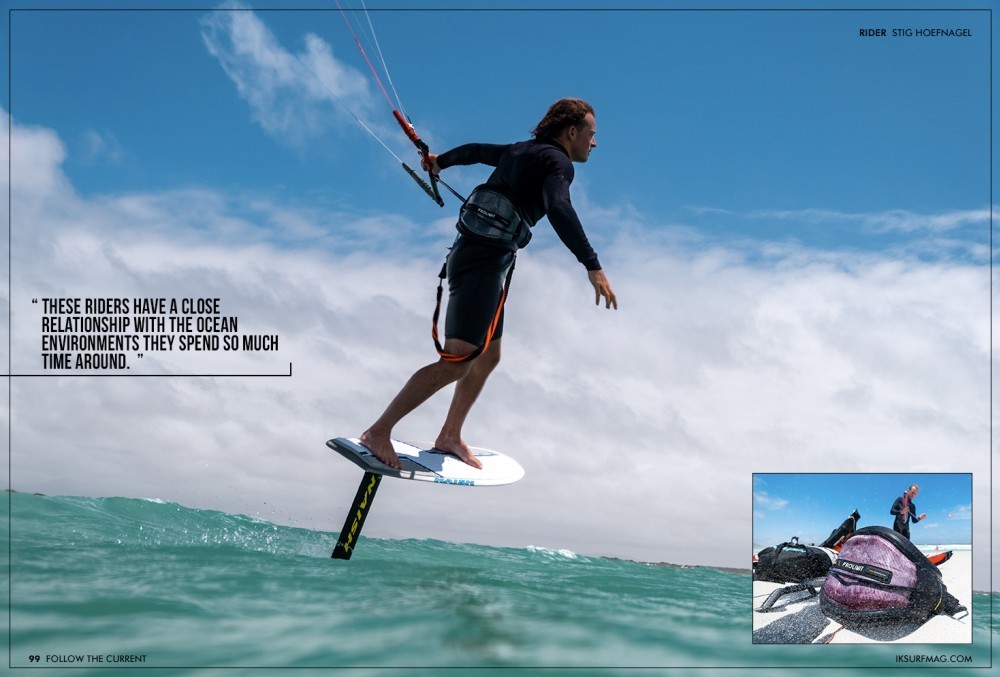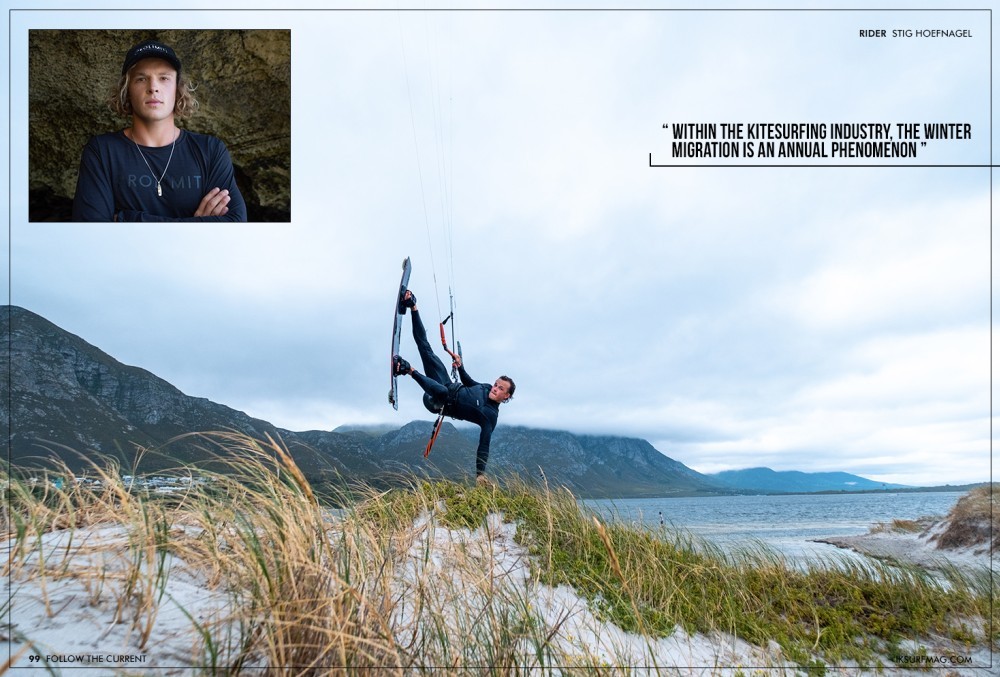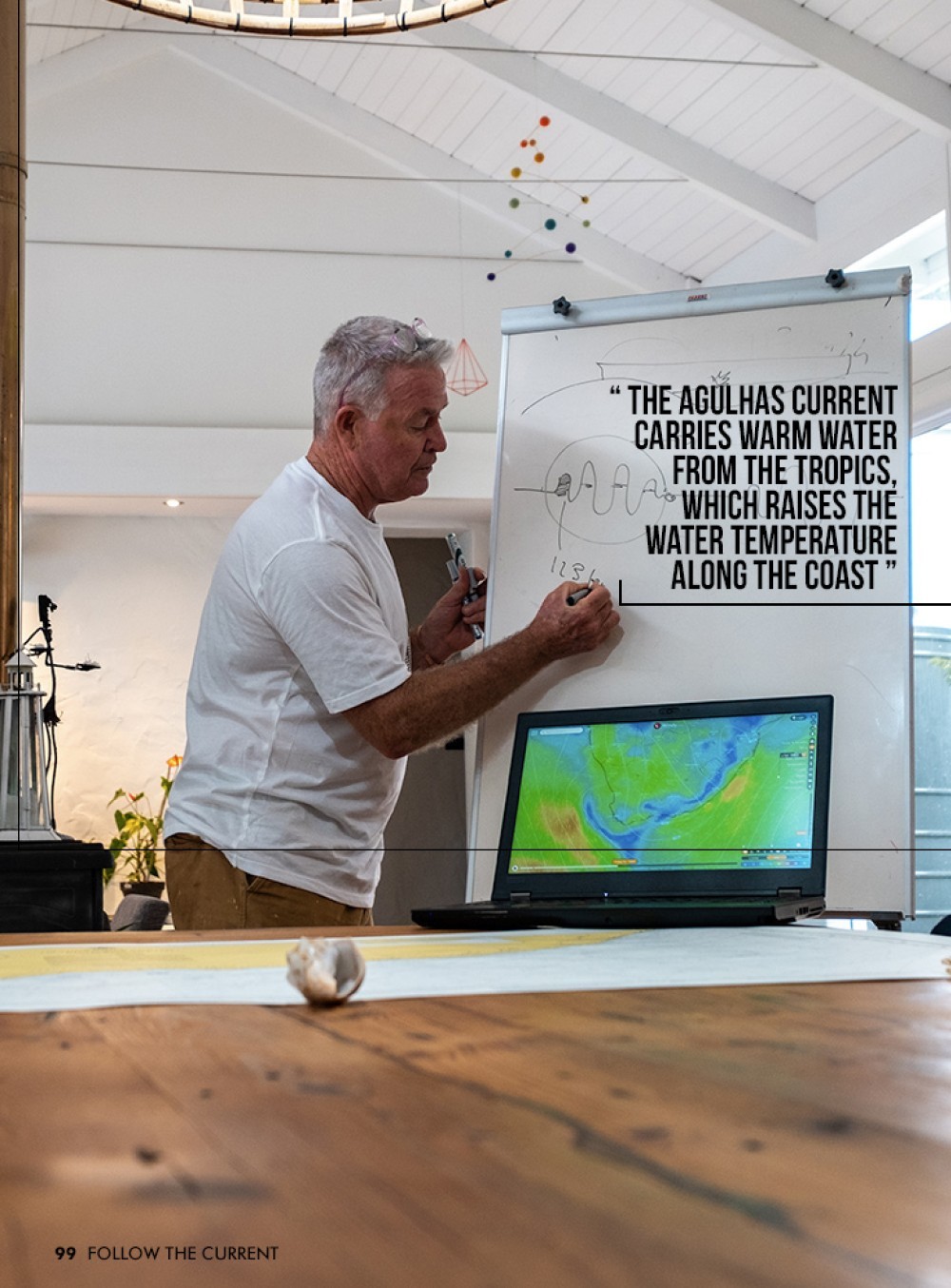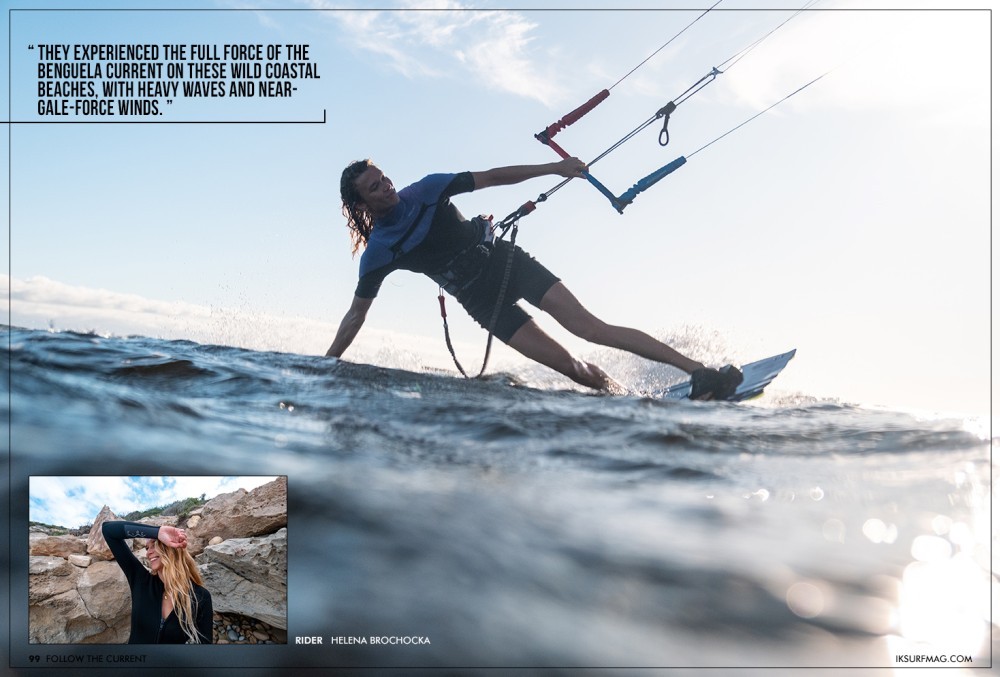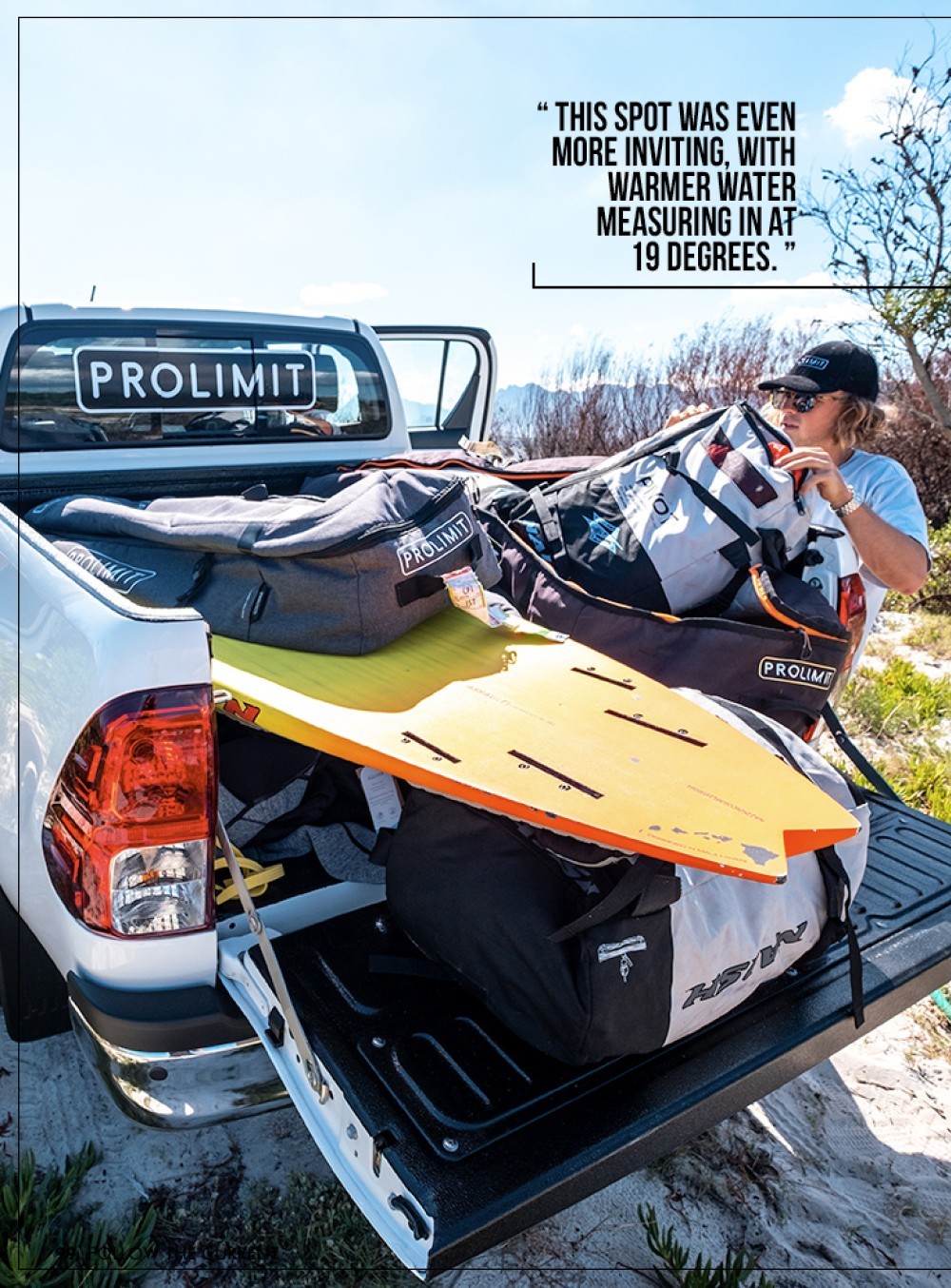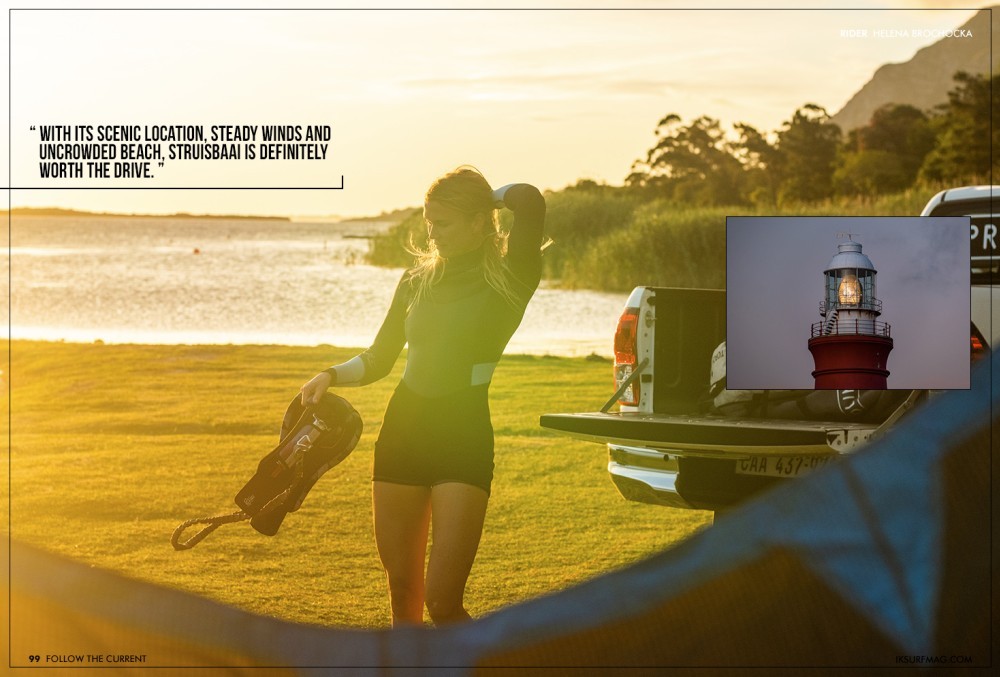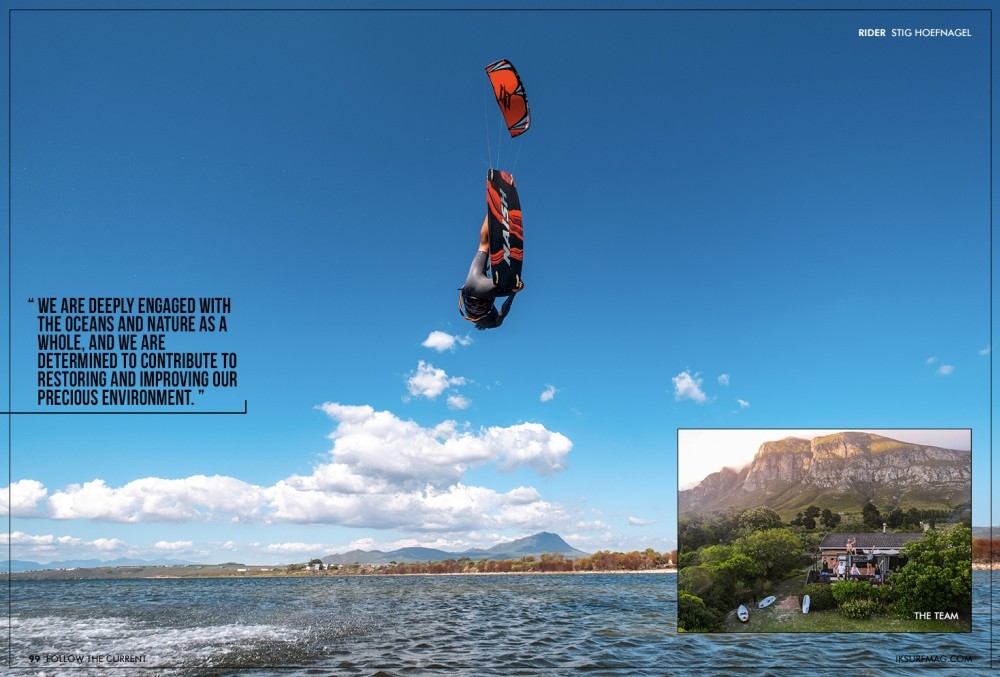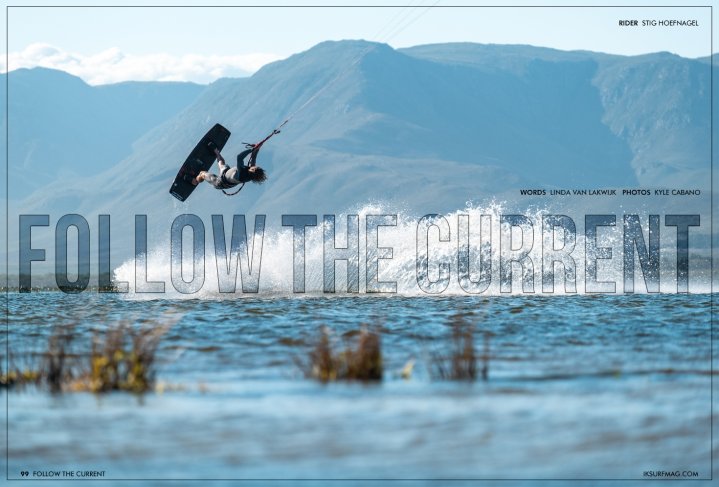
Follow The Current
Issue 99 / Tue 6th Jun, 2023
What happens beneath the water's surface? How do currents affect our kite spots? In this article, Prolimit and Naish riders Stig Hoefnagel and Helena Brochocka embark on a journey of discovery to the southern tip of the African continent as they Follow the Current, learning about how our ocean works as they go!
Have you ever realised what is happening below the water's surface while riding across it? Why are the waves the way they are at your local spot? Why is the water so cold while the air temperature is relatively warm?
Ocean currents play a vital role in regulating the Earth's climate and weather patterns. Currents are driven by various factors, such as wind and temperature, and can travel thousands of miles across the ocean, flowing just beneath the surface.
While this information isn't essential knowledge for the casual kitesurfer, it is for us. Behind the scenes at Prolimit, this information is critical when developing products that help our users explore the elements safely and comfortably. We collect water temperature and weather data and consult professional meteorologists and oceanographers to learn everything we can about currents, weather, water and air temperature, and the climate. With this data, we give insight into the complex relationship between ocean currents, water temperature and climate patterns. And most important, which wetsuit to wear, where and when.
We took our international team riders, Stig Hoefnagel and Helena Brochocka (kitesurfing) and Henri Kolberg (windsurfing), on a journey to South Africa. As professional athletes travelling around the world, these riders have a close relationship with the ocean environments they spend so much time around. For them, finding a deeper awareness of how they work is an important pursuit. They were ready to take the plunge as soon as they got their feet on the ground in Cape Town.
Cape Town is one of the most famous locations in the world for water sports. Many water sports enthusiasts escape their winter in the Northern Hemisphere for several weeks each year to surf the incredible coastline surrounding Cape Town. Within the kitesurfing industry, the winter migration is an annual phenomenon, with many of the world's best kiters congregating along the windy beaches of Blouberg.
Everyone who has been to the stunning City of Cape Town knows you can expect four seasons in one day. Even on the hottest summer day, the water is relatively cold - until you head to Hermanus or east to Cape Agulhas. In these regions, the water temperature is much warmer. To understand why the water in Cape Town is so much colder than it is just 200km straight to the east, our team embarked on a road trip to the place where two oceans meet: Cape Agulhas.
Our first stop was at Steve Pike's house in Kommetjie; Steve owns the oldest website on surfing and marine weather in South Africa, Wavescape.co.za. He is a surf forecaster who looks at weather patterns, currents, temperatures, and swell. Steve - aka Spike - explained how the currents are distributed around the coastline of South Africa.
Cape Town is located on the west coast of South Africa, where the cold Benguela Current flows from the southern Atlantic Ocean. The Benguela Current brings cold water from the south, which cools the coastal waters of Cape Town. On the other hand, Agulhas is located on the south coast of South Africa, where the warm Agulhas Current flows southwards along the east coast of Africa. The Agulhas Current carries warm water from the tropics, which raises the water temperature along the coast of Agulhas.
The Benguela and Agulhas currents are parts of the larger South Atlantic Gyre, a circular pattern of ocean currents in the South Atlantic Ocean. The combination of these currents and other oceanographic factors creates a distinct temperature difference between the waters off the west and east coasts of South Africa.
Armed with this new knowledge of what was happening beneath the surface, our team set off towards the second stop of the journey, and the starting point of our actual road trip, the Cape Peninsula. The conditions on arrival were super windy and misty, and the water temperature was 14 degrees Celsius. The air temperature was 22 degrees, but the wind chill temperature was much lower due to the strong wind and cold water.
The team spent a few days exploring the Cape Peninsula, taking advantage of every bit of wind they could find. From Misty Cliffs to Platboom, they experienced the full force of the Benguela Current on these wild coastal beaches, with heavy waves and near-gale-force winds.
After they'd had their fill of strong wind and chilly water around the Cape Peninsula, it was time to pack the car and head east. Since hearing about how much warmer the water was towards the east, everyone longed to swap their thick wetsuits for shorties. With a car laden with gear - and all kinds of new knowledge thanks to Spike, the group set off towards Hermanus.
As is often the case in South Africa's Western Cape, the wind was already blowing. After crossing Sir Lowry's Pass, the steady breeze had all the riders looking for the nearest body of water. Unable to hold in their excitement until Hermanus, we quickly stopped on the Botrivier to score a session on the lagoon. It was 24 degrees Celsius, and the water was around 17 degrees, with approximately 18 knots of smooth wind. It was a pleasant experience after the wild ocean conditions we'd just come from.
After a solid session, we hopped back in the vehicle to continue our journey to our original destination for the day, Hermanus and its well-known kite spot, the Klein River Lagoon, accessible from Grotto Beach. This spot was even more inviting, with warmer water measuring in at 19 degrees. It was quickly apparent that Stig, Henri, and Helena were starting to enjoy wearing their shorty wetsuits more and more!
The final stop of the road trip was the place we were most looking forward to, Cape Agulhas. Most people who travel to South Africa believe that Cape Point is the southern tip of South Africa, as it is a prominent and well-known landmark along the Cape Peninsula. However, it would be more accurate to describe Cape Point as the southwesternmost point of South Africa. Cape Agulhas, 177 km to the east and south, is the true southern tip of the African continent and the place where the Atlantic and Indian oceans meet.
Naturally, we had to stop off to visit the red and white striped Cape Agulhas Lighthouse, an important historic landmark and the second oldest lighthouse that still operates in South Africa. From the lighthouse, you can see the sleepy coastal town of Struisbaai. Due to the location, Struisbaai benefits from consistent winds that are perfect for water sports. With its scenic location, steady winds and uncrowded beach, Struisbaai is definitely worth the drive.
Our expectations following the lesson with Spike turned out to be true; the water in Struisbaai was 22 degrees when we arrived and, therefore, the warmest water our team experienced on the entire road trip. It was the perfect place for the final session of our journey. Having this detailed knowledge of the currents and being able to fly across the ocean's surface while picturing the Agulhas Current flowing beneath added a new dimension to our session. As Stig said, "Nature turned out to be quite different than we were expecting…"
Follow the Current isn't just a road trip, photoshoot or video project; It is an innovative and educational project for water sports enthusiasts and anyone who cares about our oceans and climate. Follow the Current is also aimed at raising awareness about the impact of climate change on the oceans and the need to protect them. Ocean currents are likely to change as the Earth's temperature continues to rise, which could have significant implications for the planet's climate and weather patterns.
By understanding how ocean currents work and how they affect the planet's climate and weather patterns, we can all play a part in protecting the oceans and ensuring a sustainable future for our planet.
Videos
By Linda.van.Lakwijk




